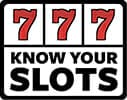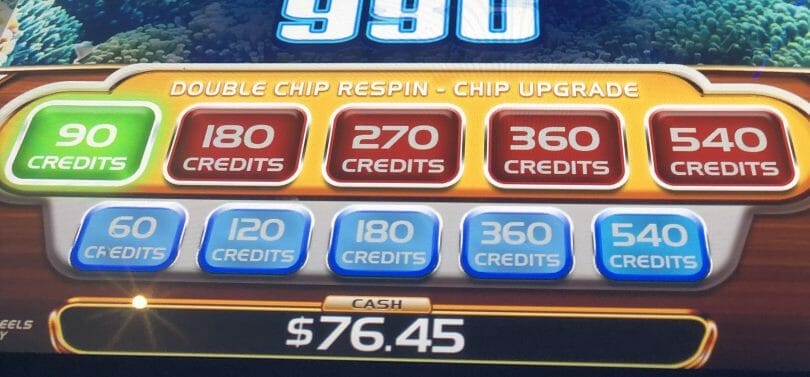The going belief is that licensed games don’t pay as well. The idea is that since licensed properties are more expensive since there’s intellectual property to be paid for, and they’re generally leased games that have a shelf life, they tend to cost the casino more and to make up for it, the paybacks have been lowered.
STATUS: This may have been the case in the past, and could be the case with certain games with older licensed games still around, like older Wheel of Fortune games. Nowadays, they have easier ways to make their money.
10 years ago, it wasn’t unusual to see licensed games like Wheel of Fortune with the same 3- or 5-quarter scenarios as non-licensed counterparts. In those scenarios it wouldn’t be unusual for the games to have a lower payback. Their popularity also meant they could get away with a lower payback.
In more modern, video reel scenarios, having games that pay less is feared to be spotted by players based on some of the research out there. Also, many manufacturers aren’t looking to push paybacks down too far because it could limit the lifetime of a game if players find it too frustrating. So instead, they’ve taken another tack: Raising the minimum bets and bet levels on licensed games.
Bet Creep Takes on a New Dimension
Overtime penny games have slowly seen bet inflation. the 20-30 cent bets minimums to bet all lines 10-15 years ago have given way to 40, 50, 60 or even 75 cent bets on many games. Take the Buffalo video reels series:
- Buffalo: 40 cent bet
- Buffalo Deluxe: 50 cent bet
- Buffalo Stampede and Buffalo Gold: 60 cent bet
- Buffalo Gold Revolution and Buffalo Diamond: 75 cent bet
Each generation of games pushes the bets out further. You can of course find the old games if you wish to play a lower bet, but it shows the evolving dynamics of slot bets.
Licensed games take it a step further. Whereas some Buffalo Gold machines let you turn off the gold feature and bet at a lower level, and many older machines let you bet less lines, licensed games don’t generally give you that option at all.
Licensed Game Volatility
Licensed games also tend to be more volatile, meaning if you don’t manage your bankroll for that volatility, you could bomb out well before anything exciting happening.
Take Wheel of Fortune 4-D, which effectively adds a wheel on to the Golden Egypt mechanic.
- For the same 75 lines you bet $1 a spin vs. 75 cents on Golden Egypt. Golden Egypt lets you bet less lines, Wheel of Fortune doesn’t.
- Three bonus symbols on Golden Egypt guarantee a bonus; on Wheel, you can get credits, free games or a progressive.
- Golden Egypt gives you three volatility choices for free spins; Wheel picks the most volatile version automatically.
- To have a shot at the top progressive, you must bet at least $3 a spin, consistent with some of the other Wheel games that have come out in recent years.
That’s a lot of adjustments to Golden Egypt to make it work in the licensed Wheel of Fortune realm, but it’s still a fun game – you just have to be prepared for higher swings, which isn’t unusual on Wheel of Fortune slots.
Licensed Slots Have Higher Bets
Here’s example of other licensed games in recent years and their minimum bets:
- Walking Dead 2: 75 cent minimum bet
- 007 Thunderball and Casino Royale: 60 cents for the base spin, or 90 cents with the more/better feature
- Simpsons and World of Wonka: 50 cents for the base spin, or 75 cents for the more/better feature
- Pac-Man Wild Edition: 60 cents (it’s even marked as a 2x line bet automatically; no option for a 1x at 30 cents)
- Tim McGraw: 50 cents for one game, but $1 to get both games, and $3 to qualify for the jackpot.
The game that could’ve gotten away with a 30 cent bet, Pac-Man, opted to double it instead.
The House Edge Loves Higher Bets
So why do they up the minimum bets instead of lowering the payback? By upping the minimum bet, you push more money through the slot machine. By doing so, you put more money at risk, and the math of lots of spins against the house edge will ultimately lead to the revenue they need to support it. Here’s an example:
30 cents a spin, 500 spins an hour, is $150 through the machine. On a penny machine with a 12% house edge (which is about average), that machine could generate $18 in revenue for the casino. That number is of course a long term average – the machine could pay a jackpot and could lose the casino money in a given hour, or hoover a hundred from a player.
Now, take a licensed game with a 60 cent a spin bet. That same 500 spins now generates $300 in coin in. With the same house edge, now we’re talking $36 in revenue for the casino in that hour. And again, that’s an average – a jackpot, or a rough patch of dead spins, could swing it in either direction.
This is also why you see bets creeping upward over time – it’s an easy way to attempt to get more revenue out of players. That’s why sequels push a number up (they expect the popularity of the previous game, like the Buffalo example at the beginning, will drive play of the new game even with higher bets), and you’ll see newer games with higher floors.
Many newer games take a cue from the licensed model and turn off the ability to bet lines. There are workarounds for the low rollers, but you have to hunt for them nowadays. Or you can always find games that let you reduce the features.
So, no, most new licensed games don’t have reduced payback percentages, but they find ways to get at the money in other ways. So you don’t have to worry that the shiny new slot with a theme you like is going to be hungrier for your money than elsewhere – just realize the amount you’re betting and the higher volatility means you should plan accordingly.
Do you enjoy playing slots machines with licensed themes? Share your favorite ones in the comments below!





